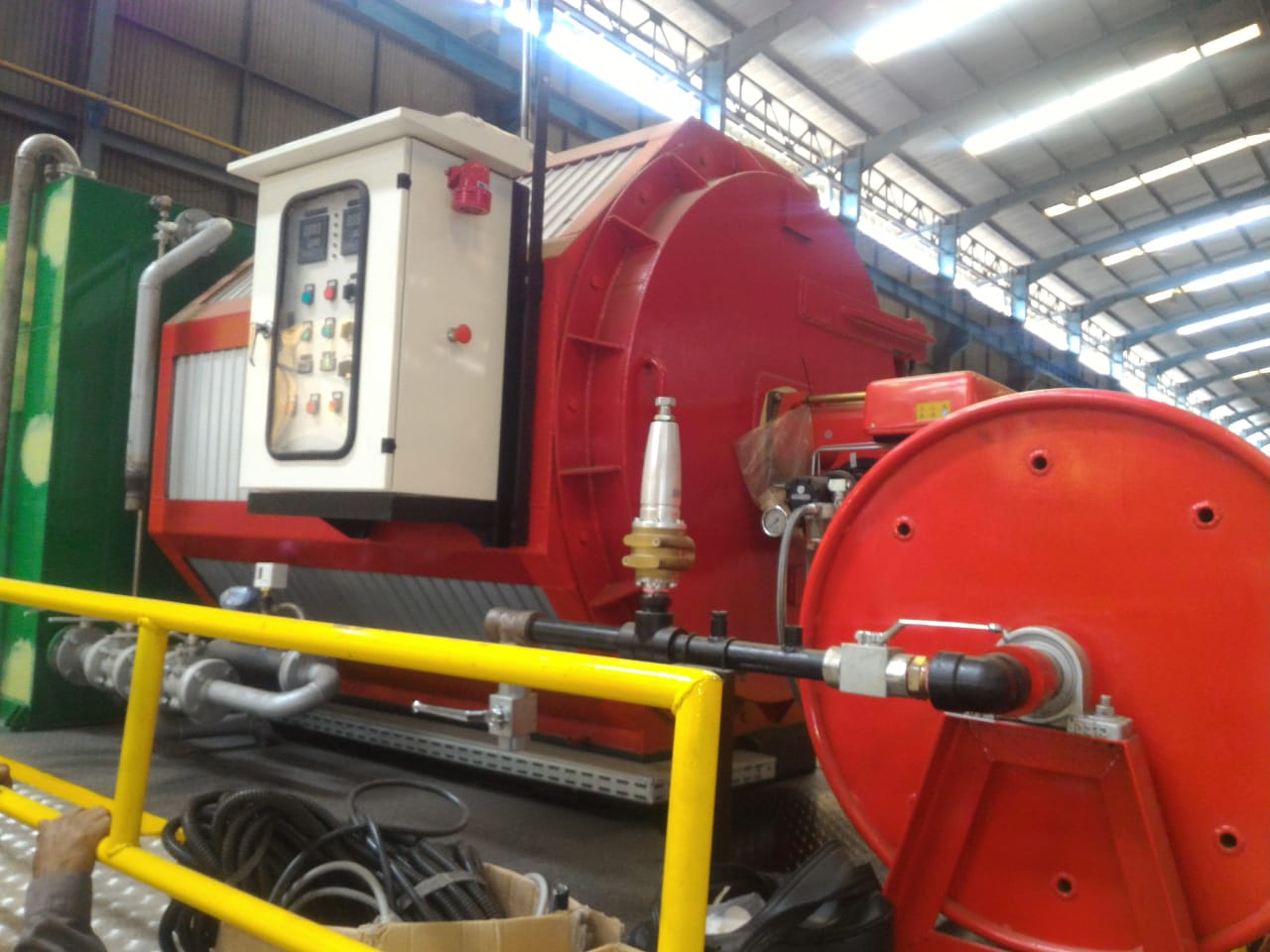WATER PIPE BOILERS AND API PIPE BOILERS
Classification of boilers in general are grouped into 2, namely:
1. Fire Pipe Boilers
2. Water Pipe
Boilers Fire Pipe Boilers
In the type of fire pipe boilers heat transfer from hot gas to water then the water turns into steam, this is due to the hot gas produced by combustion ( flue gas) flows through pipes that are covered with water on the outside.Fire pipe boiler type has the characteristics of producing steam pressure and low capacity. The arrangement of the pipes in this boiler is made pass by pass, the purpose is to make the transfer of heat from hot gas or fire to water more effective. That is, the direction can be alternating towards the burner when hot gas passes through the pipes in the boiler. (image source: matabayangan.blogspot.com )

How it works from the fire pipe boiler is in the ignition process occurs in the pipe, then the heat generated in the process is directly delivered to the boiler that contains water. The capacity and pressure produced by the boiler are affected by the size of the boiler construction.
Example:
1. Simple Vertical
Kettle 2. Cochran Kettle
3. Lancashire Kettle
4. Cornish Kettle
5. Locomotive Kettle
6. Boat
Kettle 7. Velcon Kettle
Advantages and disadvantages of fire pipe boiler type:
Advantages:
1. Does not require special settings, so the process easy and fast installation.
2. The initial investment for this cheap fire pipe boiler.
3. The shape is more compact and portable.
4. For 1 HP boiler does not require a large area.
Disadvantages:
1. Steam operating pressure is limited to 18 bar low pressure.
2. When compared with water tubes, the steam capacity is relatively small (13.5 TPH).
3. The kiln is difficult to reach so it is difficult to clean, repair and check the condition.
4. A lot of heat energy is wasted directly into the stack so that the efficiency is low.
Water Pipe Boilers
In a water pipe boiler, water is inside the pipe while hot gas is outside the pipe. These water pipe boilers can operate at very high pressures up to more than 100 Bar. Water pipe boilers have the characteristic of producing high steam capacity and pressure. Based on the type of boiler, the construction installed in the boiler can be straight and curved. In parallel, straight pipes installed inside the kettle are connected with 2 headers. Horizontally above the pipeline a header is attached to the steam drum. The arrangement of the two headers has a certain bias that aims to regulate the circulation of steam in the boiler. (image source: matabayangan.blogspot.com )
The way the boiler water pipes work is outside the ignition process pipe, then the heat generated is used to heat the pipes containing water. Through the economizer the water is first conditioned, then steam is produced which is collected in a steam drum. Through the secondary superheater and primary superheater stages after the appropriate pressure and temperature the steam is released into the main distribution pipe. Inside the water pipe, there must be conditioning of water flowing against minerals or other contents dissolved in water. This must be considered in this type because it is a major factor.
Example:
1. Babcock and Wilcock
kettle 2. Lamont
kettle 3. Benson
kettle 4. Yarrow
kettle 5. Loeffler kettle
Advantages and disadvantages of water pipe boilers:
Advantages:
1. Large steam capacity up to 450 TPH.
2. Operating pressure reaches 100 Bar.
3. Compared to fire tube boilers, water tube boilers have a higher efficiency value.
4. To carry out inspection, cleaning, and repair of furnaces within easy reach.
Disadvantages:
1. Water boiler tube construction process is more detailed.
2. Initial investment is relatively more expensive.
3. The handling of water entering the boiler in this system is more sensitive so it needs to be maintained and requires supporting components for this.
4. The construction requires a large area because it is able to produce greater steam capacity and pressure.

